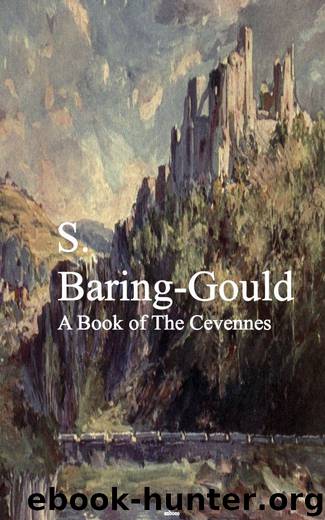A Book of The Cevennes by S. Baring-Gould

Author:S. Baring-Gould [Baring-Gould, S. (Sabine)]
Language: eng
Format: epub
Publisher: anboco
Published: 2017-01-10T23:00:00+00:00
FOOTNOTES:
[7] A. Janet, Annuaire du Club Alpin, 1891.
[8] Les Abîmes, Paris, 1894.
CHAPTER IX
THE WOOD OF PAÏOLIVE
Curiosity of the wood—How the rock disintegrated—Extraordinary shapes—A labyrinth—La Gleyzasse—Hermitage—the King of Païolive—The Royalists of 1792—Jalès—The Bailli of Suffren—Taking the inventories.
Pagus Olivæ. Curious the wood is, but cannot compare with Mourèze or Montpellier le Vieux, which have characteristics in common with it. The characteristics are these. There is an extensive elevated platform of cretaceous limestone of very unequal consistency. The result of this inequality has been that the softer matter has been washed away, whether at the retreat of the Tertiary ocean, or whether by atmospheric degradation alone is uncertain, leaving the cores of greater resistance isolated, as turrets, obelisks, bridges. And these cores themselves containing soluble matter have been riddled in all directions by the rain that, resting on them for a moment, has been then absorbed, and has carried for th through every crevice what it was able to dissolve. But even the masses of hardest texture are so soft that the rain soaking into them and then running out at every perforation has furrowed the white face with its trickling tears.
The wood measures three miles in each direction, and a guide is needed through the labyrinth of galleries and masses of insulated rock, all buried in a wood of oaks, here and there cleared for mulberry plantations.
It lies beside the road from the station of S. Paul le Jeune to Les Vans, and reaches to the river Chassezac, that has cut its way through the plateau in a profound ravine. In fact, the same formation continues on the further side of the stream, but the shapes of the rocks assumed there are less eccentric. A guide lives in a cottage where a road to the right joins that coming from S. Paul, and he charges three francs for showing visitors the principal sights in the wood, five francs for a complete exploration.
The path, or track rather, changes direction at every moment, wriggling in and out among the rocks, over fallen masses, down descents where the brambles throw long streamers across one's path to arrest progress; the thorns claw and rend ladies' dresses. But the turf is purple with violets, and the fantastic shapes of the rocks draw one forward in defiance of thorn and prickle.
Some rocks resemble monstrous beasts. Near the road are the Lion and the Bear, engaged in a wrestle. There are castles with windows and doors, pointed arches, a very orgy of natural architecture in which every style is represented. We pass through narrow rifts into which the sun never penetrates, arrive by long galleries at culs-de-sac, and are forced to retrace our steps. Everywhere cavities, grottoes, piercing the rock that glares white in the sun and almost blinds the eye. We arrive in a great cirque, in the midst of which are mulberries. In and out, everywhere grow oaks and broom; suddenly we come forth upon the gaping chasm through which rolls the Chassezac. A narrow and dangerous path d own a rift enables one to descend to the river.
Download
This site does not store any files on its server. We only index and link to content provided by other sites. Please contact the content providers to delete copyright contents if any and email us, we'll remove relevant links or contents immediately.
| Africa | Americas |
| Arctic & Antarctica | Asia |
| Australia & Oceania | Europe |
| Middle East | Russia |
| United States | World |
| Ancient Civilizations | Military |
| Historical Study & Educational Resources |
Room 212 by Kate Stewart(5037)
The Crown by Robert Lacey(4723)
Endurance: Shackleton's Incredible Voyage by Alfred Lansing(4676)
The Iron Duke by The Iron Duke(4292)
The Rape of Nanking by Iris Chang(4138)
Joan of Arc by Mary Gordon(4014)
Killing England by Bill O'Reilly(3951)
Say Nothing by Patrick Radden Keefe(3903)
I'll Give You the Sun by Jandy Nelson(3358)
Shadow of Night by Deborah Harkness(3303)
Hitler's Monsters by Eric Kurlander(3268)
Mary, Queen of Scots, and the Murder of Lord Darnley by Alison Weir(3149)
Blood and Sand by Alex Von Tunzelmann(3138)
Darkest Hour by Anthony McCarten(3071)
Eleanor & Park by Rainbow Rowell(3063)
Margaret Thatcher: The Autobiography by Thatcher Margaret(3029)
Red Famine: Stalin's War on Ukraine by Anne Applebaum(2873)
Book of Life by Deborah Harkness(2867)
The One Memory of Flora Banks by Emily Barr(2803)
